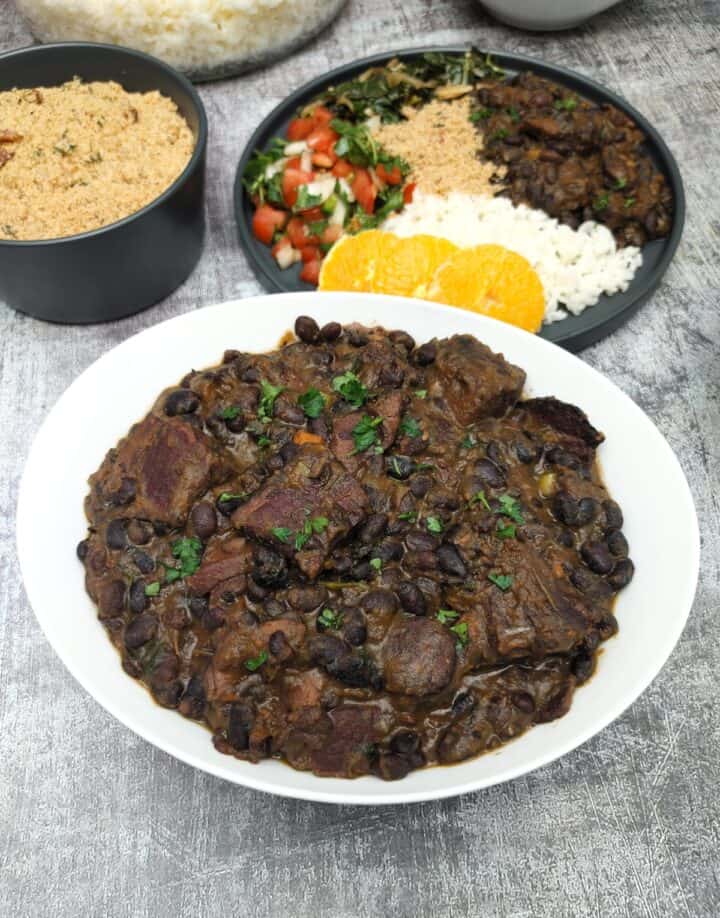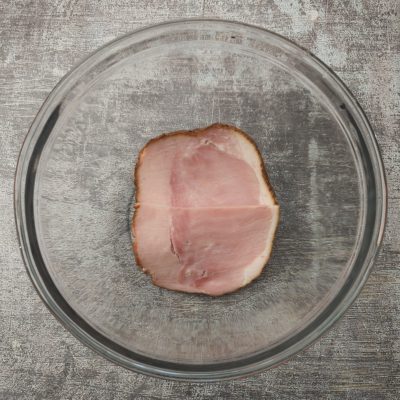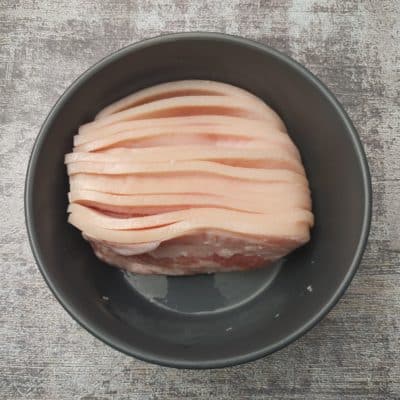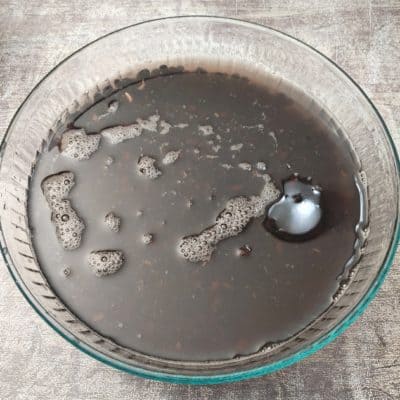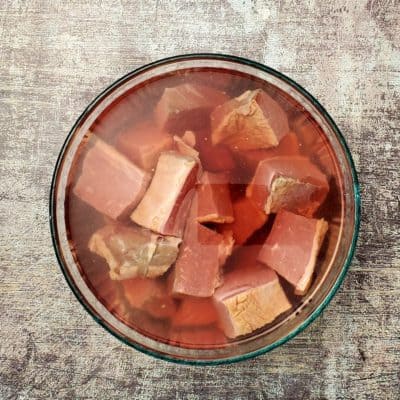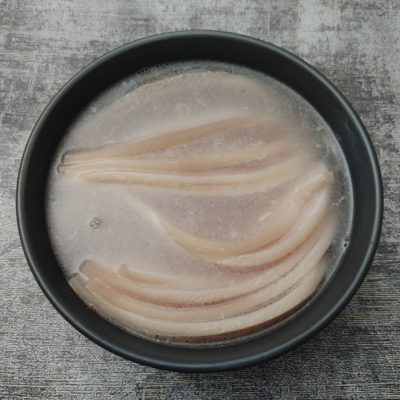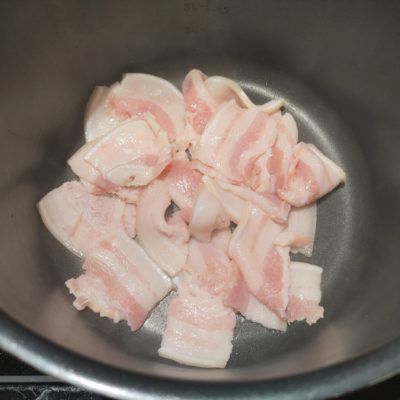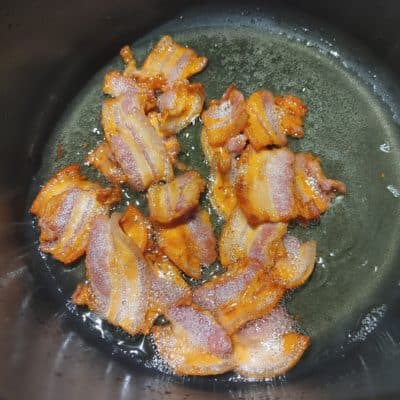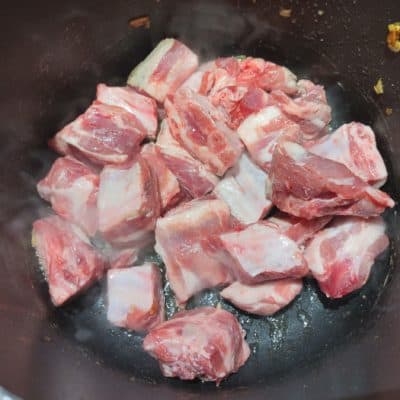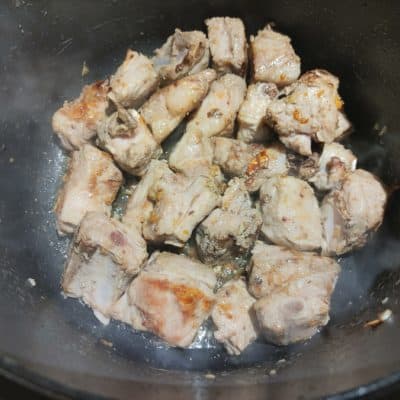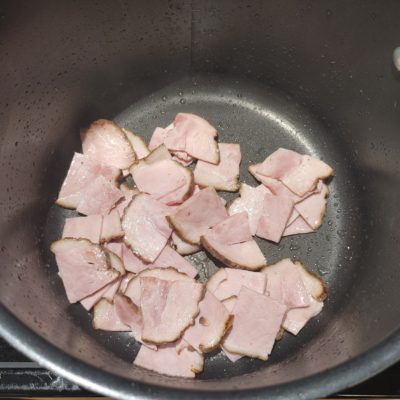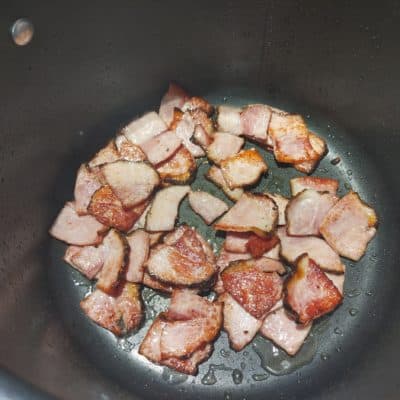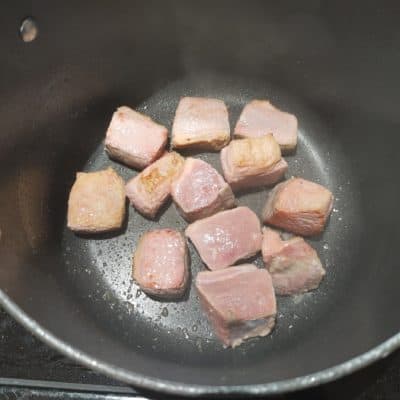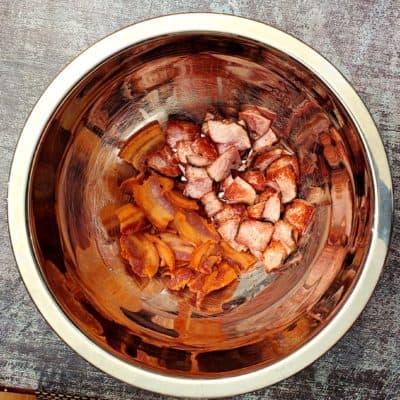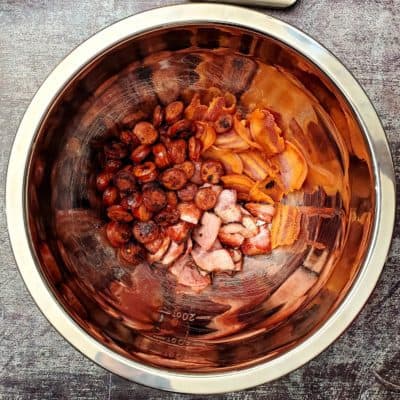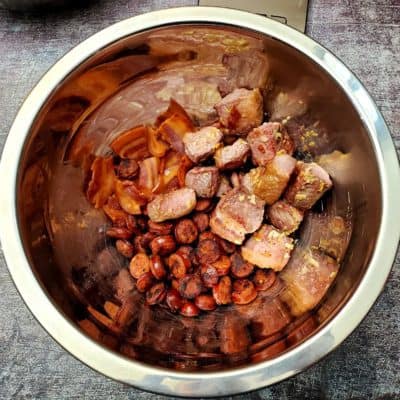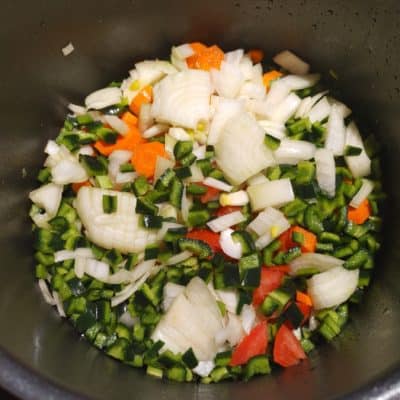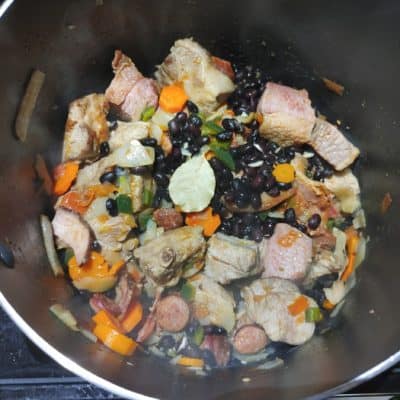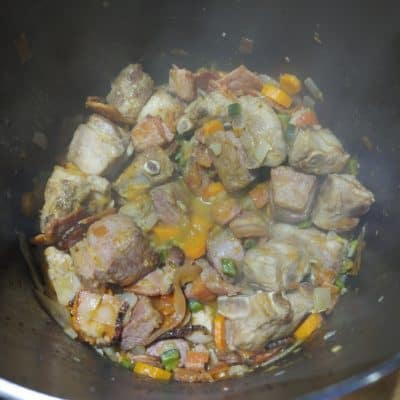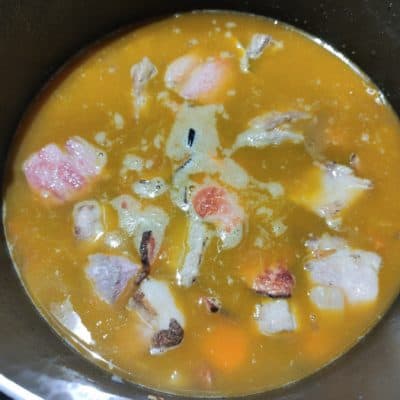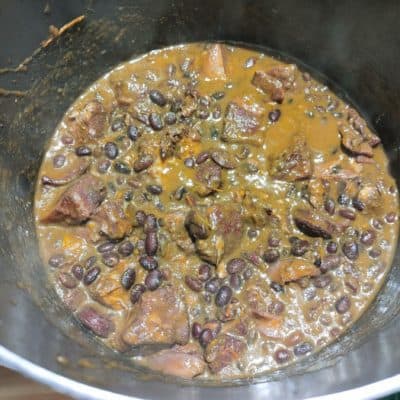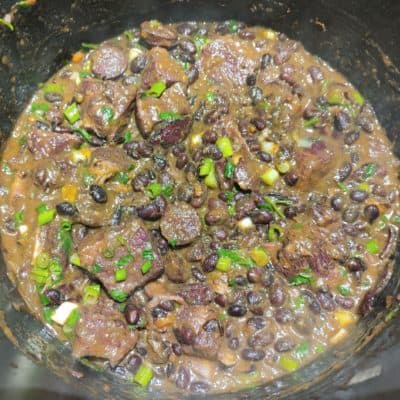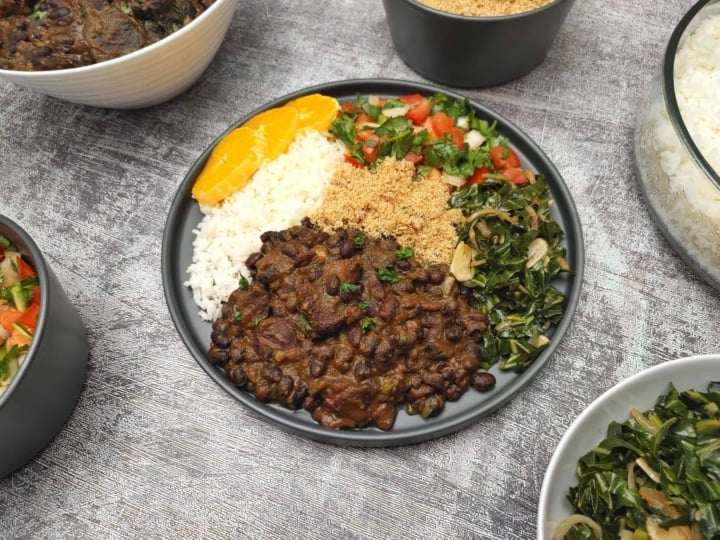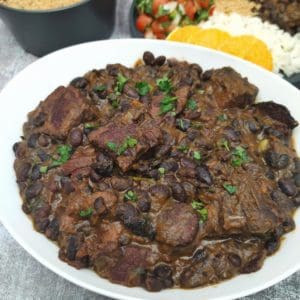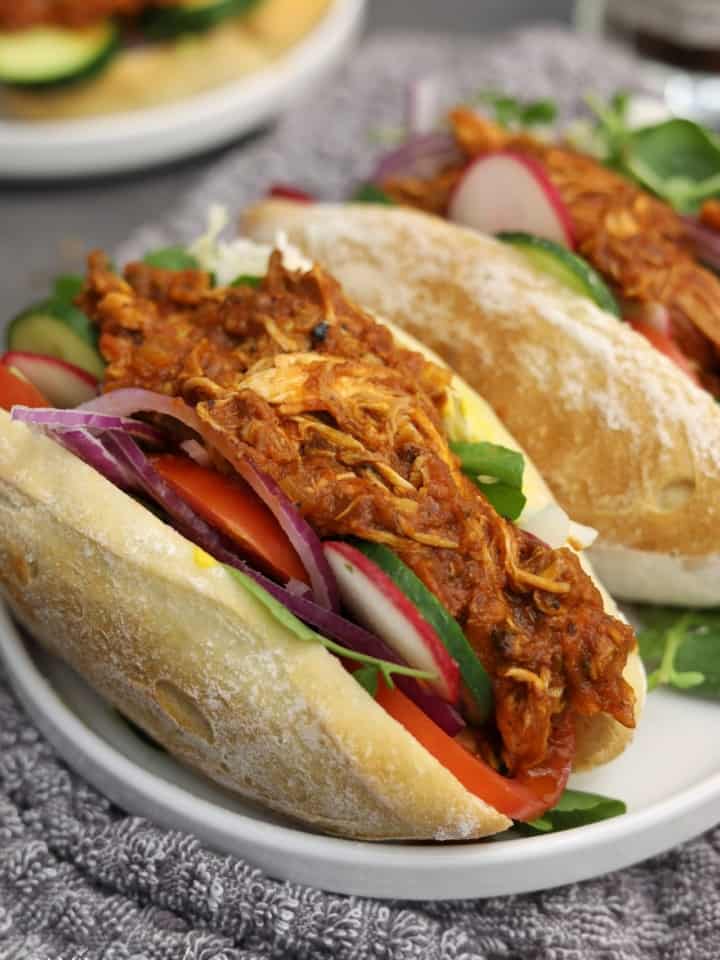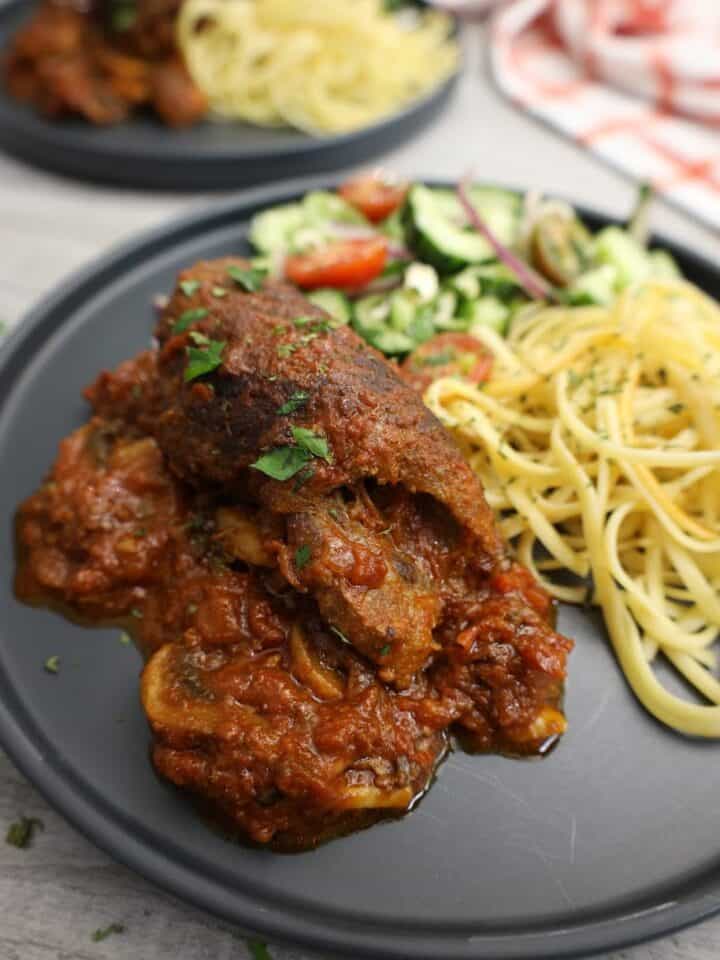Feijoada is a traditional Brazilian stew that is widely popular in Brazil and around the world. It is a hearty and flavorful dish made with black beans, various cuts of pork, and spices.
Feijoada is usually served with rice, farofa (toasted cassava flour), and other side dishes such as collard greens and sliced oranges.
How to Make Feijoada
Note: The full instructions are provided in the recipe card below.
The first step of feijoada will be preparing the ingredients. The beans should be left to soak in cold water for at least 8 hours or overnight, and the salted meat, ''Carne Seca'' and salt pork.
The following day, drain the salted meat, pat it dry, cut it into pieces about 2 inches, and set it aside. Drain the beans and wash them under cold water; set aside.
In a heavy-bottomed pot over medium heat, add the salt pork and cook, occasionally stirring with a wooden spoon, until fat is rendered and the pork begins to brown about 10 minutes.
Transfer the pork to a large mixing bowl, leaving 1 tablespoon of the fat in the pot, then pour the rest into a heatproof bowl; reserve. Meanwhile, sprinkle ¼ teaspoon kosher salt on the garlic and smash it into a paste with the side of a knife blade; set aside.
Turn the heat to medium-high until hot and shimmering, stir in a bit of the garlic paste mixture, and brown the meats on all sides; work in batches, turning with tongs, for about 5 minutes per batch; add one more tablespoon of the reserve fat if needed for each batch.
( To sear the meat properly, do not crowd the pot and let the meat develop a nice brown crust before turning with the tongs.) Once seared, transfer them into the large bowl and set them aside.
Repeat the same sear process with the sausages, transfer them into the large bowl, and reserve them for later use.
Heat 2 to 3 tablespoons extra virgin olive oil over medium-low heat in a large, heavy stockpot. Add the onions, carrot, poblano, tomato, and ground black pepper; cook, occasionally stirring, for 10 to 15 minutes or until they are softened.
Add the remaining garlic paste mixture and cook for a minute more until the aroma is released.
Add the soaked beans, along with the Carne Seca, reserved meats with its juices, whole dried red chili, and the bay leaves; cover with plenty of water by about 2 inches above the level of the beans mixture, and bring slowly to a boil over medium heat.
Reduce heat and simmer, partially covered the feijoada for 3-½ hours to 4 hours or until the consistency is thick and creamy and the meat falls off the bone, stirring and scraping the bottom of the pot occasionally ( add hot water to keep it covered by 1 inch, if necessary). Stir in the cilantro and green onion; taste and season lightly with kosher salt if needed. Enjoy!
Related Recipes:
- Easy Cornbread Muffins with Guava
- Delicious Pumpkin Brigadeiro (Truffles)
- Delicious Seafood Stew “Moqueca Baiana”
- The Best Passion Fruit Cake " Bolo de Maracuja"
- The Best Ever Raindrop Doughnuts “Brazilian Bolinhos de Chuva”
Recipe
Easy Feijoada
Ingredients
- 1 kg pork rib tips or spareribs (, cut into serving portions)
- 200 grams of dry salt-cured beef meat ''Carne Seca'' or corned beef (, cut into 2-inch pieces)
- 200 grams of smoked Ham or smoked pork hocks
- 1 (340g) of smoked sausage, cut into large pieces such as linguica or Andouille (I use Aidells Cajun Style Andouille)
- 340 grams of cured salt pork or thick bacon (, cut into pieces)
- 1 kg dry black beans (, rinsed and picked over for small stones)
- 2 bay leaves
- 1 bunch of cilantro or flat-leaf parsley (, chopped)
- 1 bunch of green onions (, chopped)
- 4 carrots (, peeled, chopped into slices)
- 12 Garlic cloves (, chopped)
- 2 large onions (, chopped)
- 5 fresh tomatoes (, cut in half and cut into cubes)
- 2 large Poblano or bell pepper (, cut in half without seeds and chopped)
- Kosher salt (, to taste)
- 3 whole dried red chili peppers (, to taste)
- 3 tablespoons extra virgin Olive oil
- 7 cups hot water or as needed
Instructions
- The first step of feijoada will be preparing the ingredients. The beans should be left to soak in cold water for at least 8 hours or overnight, and the salted meat ''Carne Seca'' and the salt pork.
- The following day, drain the salted meat, pat them dried, cut it into pieces about 2 inches, and set it aside. Drain the beans and wash them under a stream of cold water; set aside.
- In a heavy-bottomed pot over medium heat, add the salt pork and cook, occasionally stirring with a wooden spoon, until fat is rendered and the pork begins to brown, about 10 minutes. Transfer the pork to a large mixing bowl, leaving 1 tablespoon of the fat in the pot, then pour the rest of the fat into a heatproof bowl; reserve.
- Meanwhile, sprinkle ¼ teaspoon kosher salt on the garlic and smash it into a paste with the side of a knife blade; set aside.
- Turn the heat to medium-high until hot and shimmering, stir in a bit of the garlic paste mixture, and brown the meats on all sides; work in batches, turning with tongs, for about 5 minutes per batch; add one more tablespoon of the reserved fat if needed for each batch.
- ( To sear the meat properly, do not crowd the pot and let the meat develop a nice brown crust before turning with the tongs.) Once seared, transfer them into the large bowl and set them aside. Repeat the same sear process with the sausages, transfer them into the large bowl, and reserve them for later use.
- Heat 2 to 3 tablespoons extra virgin olive oil over medium-low heat in a large, heavy stockpot. Add the onions, carrot, poblano, tomato, and ground black pepper; cook, occasionally stirring, for 10 to 15 minutes, or until they are softened. Add the remaining garlic paste mixture and cook for a minute more until the aroma is released.
- Add the soaked beans, along with the Carne Seca, reserved meats with its juices, whole dried red chili, and the bay leaves; cover with plenty of water by about 2 inches above the level of the beans mixture, and bring slowly to a boil over medium heat.
- Reduce heat and simmer, partially covered the feijoada for 3-½ hours to 4 hours or until the consistency is thick, creamy and the meat falls off the bone, stirring and scraping the bottom of the pot occasionally ( add hot water to keep it covered by 1 inch, if necessary). Stir in the cilantro and green onion; taste and season lightly with kosher salt if needed. Enjoy!
Notes
All nutritional information is based on third-party calculations and is only an estimate. Each recipe and nutritional value will vary depending on the brands you use, measuring methods, and portion sizes per household.

